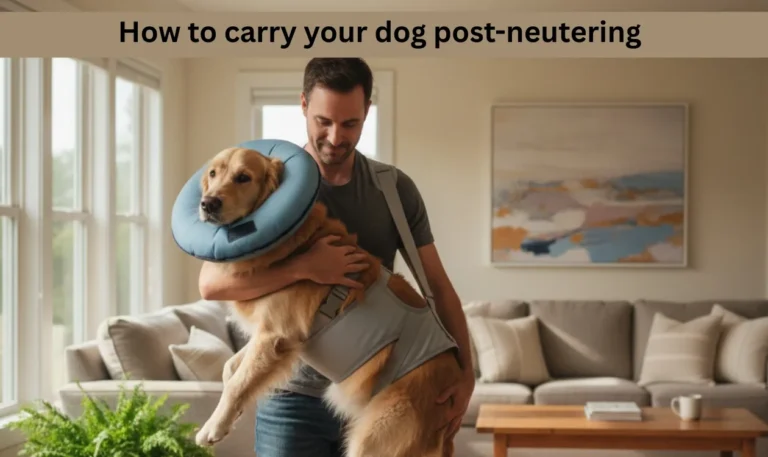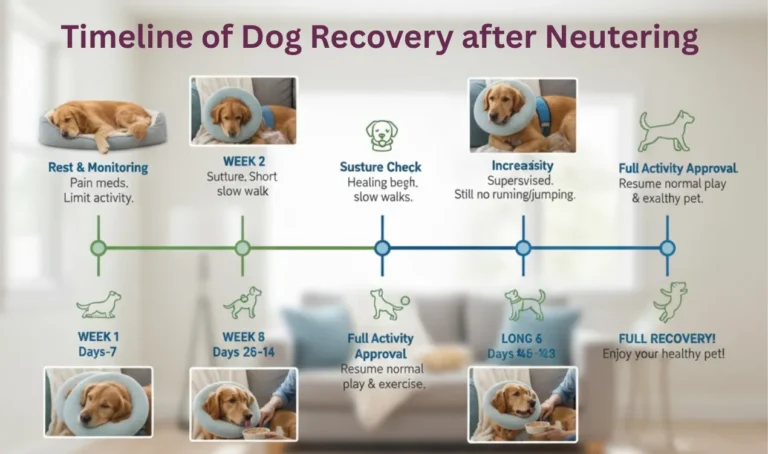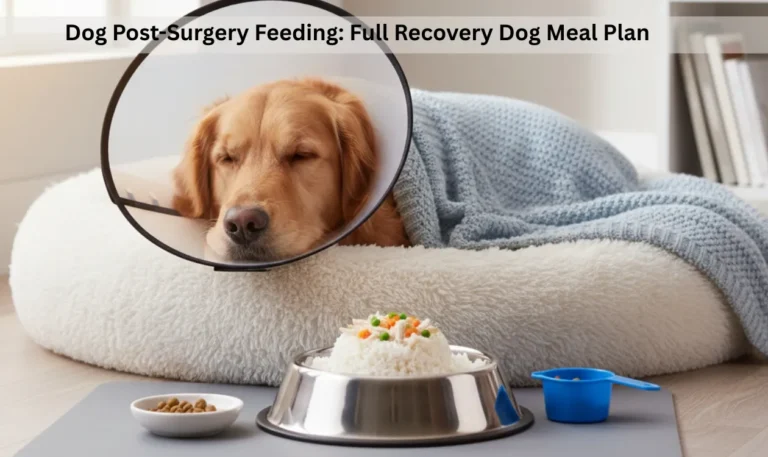Dog Neutering Recovery Time: Full Guide for Pet Owners
Neutering is one of the most common surgeries performed on dogs but for pet parents, the recovery process can bring a mix of worry and confusion.
“How long will my dog take to heal?” “When can he start playing again?”
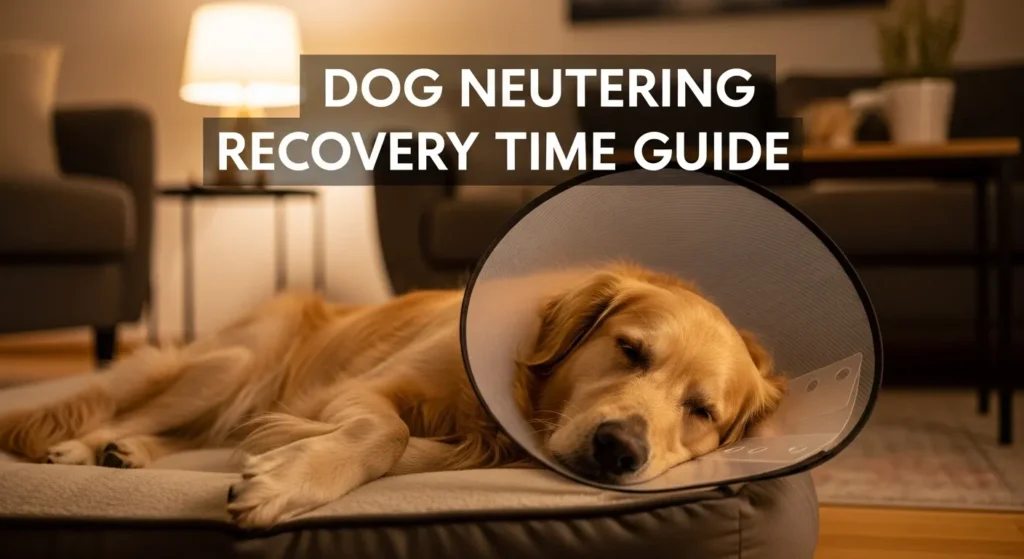
This guide breaks down everything you need to know about dog neutering recovery time, including daily expectations, healing stages, and professional care tips to ensure your dog heals safely and comfortably.
Understanding Dog Neutering
Neutering (also known as castration in males or spaying in females) is a surgical procedure that removes your dog’s reproductive organs to prevent breeding and certain health problems.
It’s a routine surgery, but like any operation, it needs proper care and healing time afterward.

During the procedure, your dog is placed under general anesthesia. The veterinarian makes a small incision, removes the testicles (for males), or performs an ovariohysterectomy (for females).
The incision is then stitched closed and your dog begins the recovery phase.
Typical Dog Neutering Recovery Timeline
Every dog heals at its own pace, but on average, most dogs recover within 10–14 days.
Here’s a breakdown of the general timeline:

| Days Post-Surgery | What to Expect |
|---|---|
| Day 1–2 | Drowsiness, reduced appetite, minimal movement, mild soreness |
| Day 3–5 | Gradual improvement, energy returning, incision still healing |
| Day 6–10 | Scab formation, reduced swelling, limited activity advised |
| Day 10–14 | Stitches may dissolve or be removed, normal behavior resumes |
Note: Internal healing continues for several weeks, even after the incision looks normal. Avoid strenuous exercise or bathing until your vet clears it.
First 24–48 Hours After Surgery
The first couple of days are the most sensitive.
Your dog may feel groggy from anesthesia, may refuse food, and may prefer resting in a quiet spot.
This is perfectly normal.
Also Read
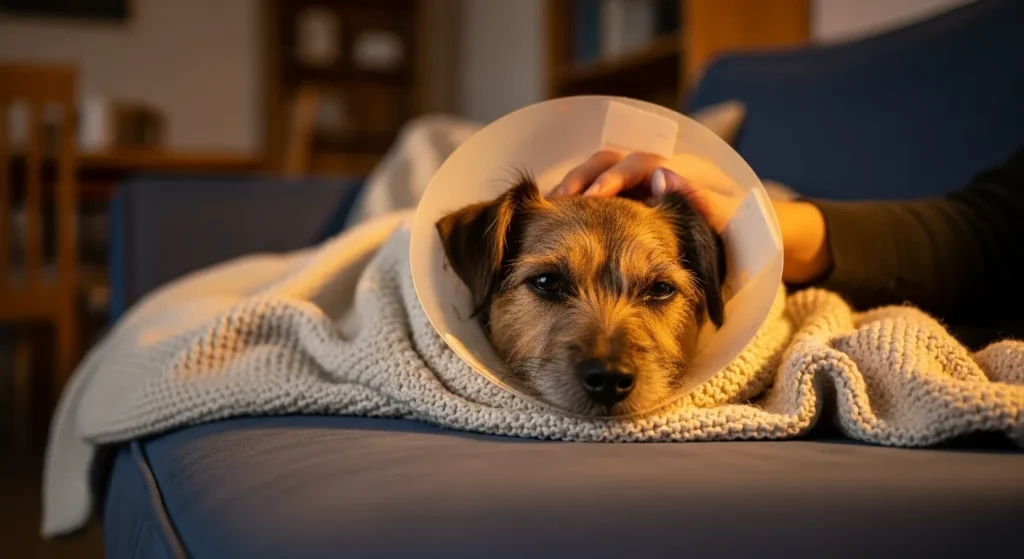
What You Should Do
- Offer a small meal and plenty of fresh water.
- Keep your dog indoors and away from other pets.
- Use a clean, soft bed in a calm environment.
- Avoid excitement or stairs.
- Don’t allow licking or chewing of the incision — use an e-collar or recovery suit.
What You Should Watch For
- Heavy bleeding
- Continuous vomiting or diarrhea
- Excessive swelling or redness
- Trouble breathing or walking
If you notice any of these signs, contact your veterinarian immediately.
Activity Restriction During Recovery
Your dog may start feeling better by day 3 or 4 — but that doesn’t mean the inside is healed yet.
Vets strongly recommend restricting activity for at least 7–10 days after neutering.
Avoid:
- Running, jumping, climbing stairs
- Tugging games or rough play
- Outdoor walks longer than bathroom breaks
Encourage:
- Rest in a crate or small room
- Calm indoor interaction
- Short leash walks for toilet time only
Proper rest helps prevent stitches from tearing and keeps the incision from reopening — one of the most common post-surgery complications.
Incision and Wound Care
The incision is small, but infection can happen if not properly monitored.
Check it twice a day for signs of redness, swelling, discharge, or odor.
Wound Care Tips
- Keep the area clean and dry.
- Do not apply human ointments unless prescribed by your vet.
- Avoid baths, swimming, or grooming for 10–14 days.
- If your dog licks the wound, use an Elizabethan collar (cone) or a recovery shirt.
Mild pinkness and scabbing are normal, but pus or bad odor are warning signs of infection.
Pain Management and Medication
Your vet will prescribe specific pain relief or anti-inflammatory medication for your dog’s comfort.
Follow the dosage exactly as directed.
⚠️ Never give human medications like ibuprofen, aspirin, or Tylenol to dogs — they can cause liver damage or even death.
If your dog appears restless, shakes, whines, or refuses to eat, call your vet to review pain management options.
Feeding During Recovery
After surgery, dogs may skip their first meal or eat less. That’s normal.
Start with a light diet — boiled chicken and rice or their usual kibble softened with water works well.
Feeding Tips
- Offer small, frequent meals for the first 24 hours.
- Keep fresh water available.
- Avoid treats or rich food that may upset the stomach.
- Return to normal diet within 2–3 days once appetite improves.
If your dog vomits or refuses food for more than 48 hours, consult your vet.
Behavior Changes After Neutering
It’s common for dogs to act differently after surgery.
Some dogs seem calmer, while others become clingy or anxious.
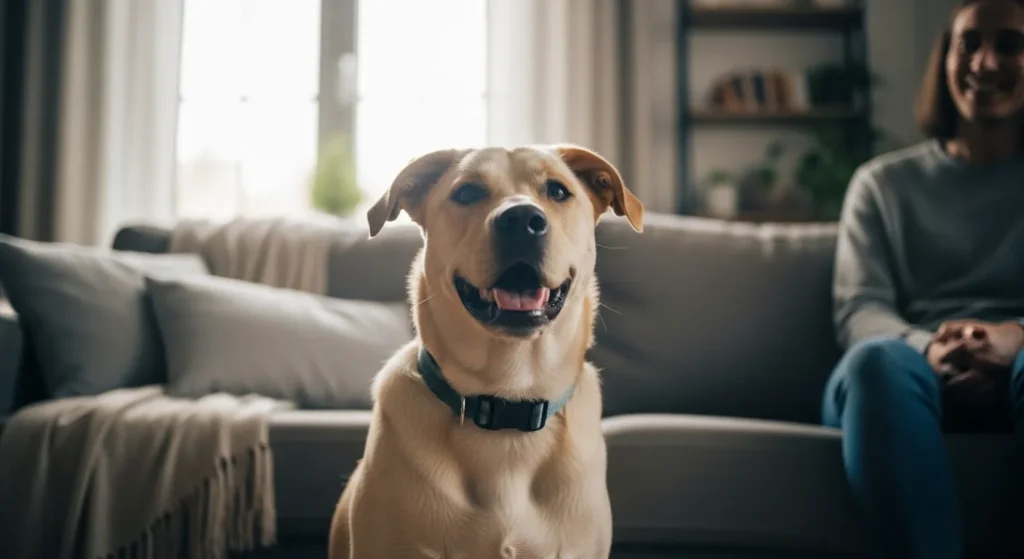
Temporary Changes You Might Notice
- Sleepiness or grogginess (from anesthesia)
- Whining or mild crying
- Reduced interest in playing
- Occasional trembling or confusion
These behaviors usually fade as your dog feels better.
However, persistent aggression, depression, or loss of appetite should be discussed with your vet.
Male vs. Female Dog Recovery Time
While recovery is similar, female dogs often require a bit more time due to the complexity of spay surgery.
| Type | Average Recovery Time |
|---|---|
| Male (Neutering) | 7–10 days |
| Female (Spaying) | 10–14 days |
| Large or Older Dogs | Up to 3 weeks |
Females undergo abdominal surgery, which means deeper tissue healing is needed.
Always follow your vet’s specific timeline before resuming walks or baths.
When to Call the Vet
Even with proper care, complications can happen.
Call your veterinarian if you notice any of the following:
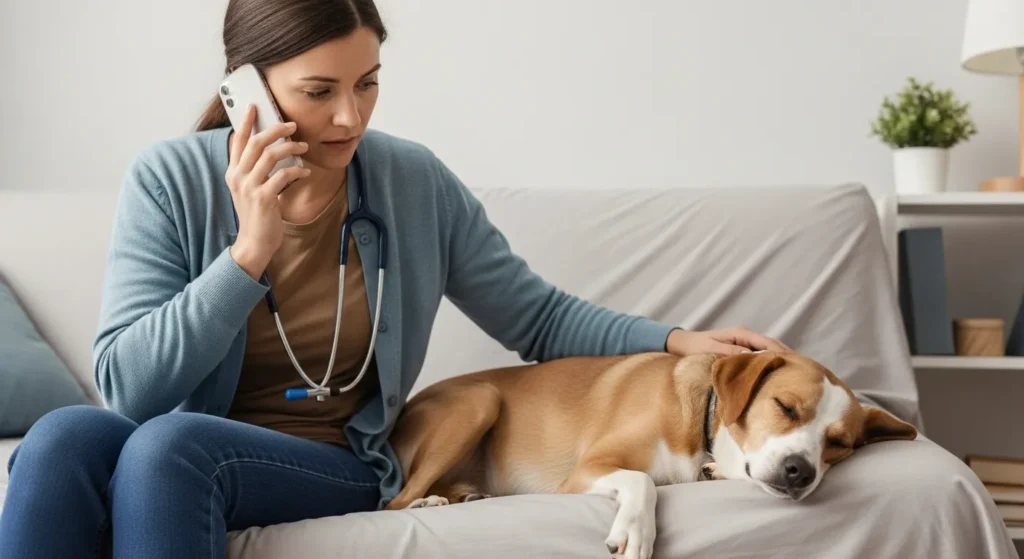
- Bleeding or pus from the incision
- Persistent swelling or redness
- Dog licking the wound excessively
- Loss of appetite for more than two days
- Fever or warm incision site
- Bad smell from stitches
- Difficulty urinating or defecating
Trust your instincts — if something feels off, it’s better to ask your vet early.
Tips to Speed Up Healing
While you can’t rush biology, these small actions help promote smoother recovery:
- Use a recovery cone or suit to prevent licking.
- Provide a calm, clean resting spot away from kids or other pets.
- Stick to vet’s medication schedule.
- Avoid bathing or outdoor dirt exposure.
- Give soft bedding and proper ventilation.
How Long Until My Dog Acts Normal Again?
Most dogs start behaving normally within 3–5 days post-neutering, but that doesn’t mean they’re fully healed.
Energy levels might rise early, making them eager to run or play — this is when owners make the biggest mistake by letting them do so too soon.
Always wait for your vet’s confirmation before removing restrictions.
Final Vet Check
A follow-up visit is often scheduled between 10–14 days after surgery. Your vet will inspect the incision, remove any non-dissolvable stitches, and confirm if your dog can resume normal activities.
Always attend this appointment — even if your dog looks fine — because hidden issues can still exist internally.
Frequently Asked Questions (FAQs)
Final Thoughts
Dog neutering recovery time mostly depends on age, breed, and post-surgery care. The golden rule is simple protect the incision, limit activity, and follow your vet’s instructions.
Your patience during these two weeks makes all the difference. Once healed, your dog will return to full energy happier, calmer, and healthier for the long run.

